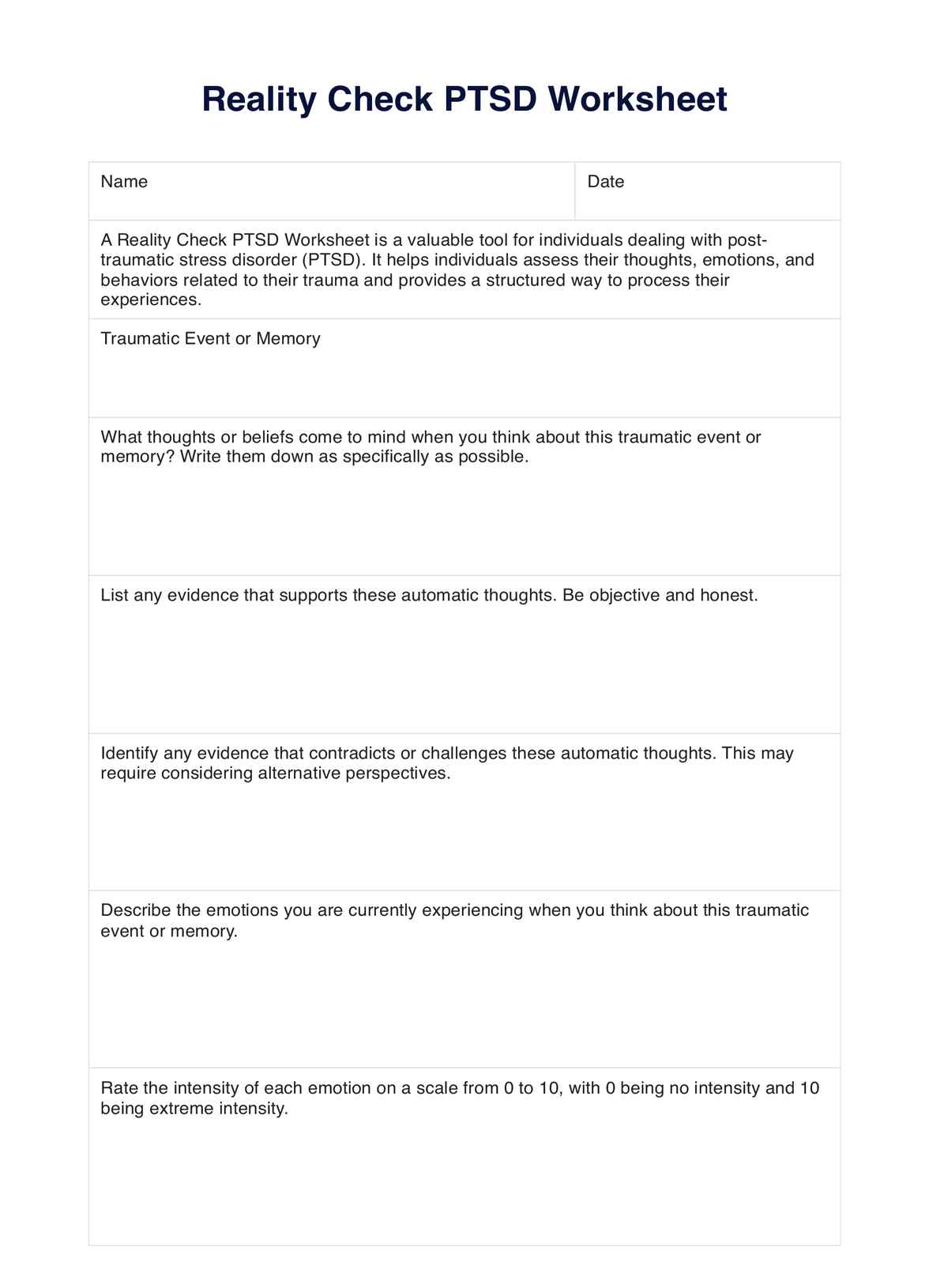The time it takes to complete the Reality Check PTSD Worksheet may vary depending on each individual's pace. Some clients may finish it in one session, while others may take longer and revisit it multiple times. The focus should be on quality over quantity, and clients should feel free to complete the worksheet within a specific timeframe.

Reality Check PTSD Worksheets
Download our free Reality Check PTSD worksheet to help clients recognize and challenge their negative thoughts about trauma.
Reality Check PTSD Worksheets Template
Commonly asked questions
You can use the Reality Check PTSD Worksheet at any point during your therapy sessions with clients. However, it may be beneficial when clients struggle with managing their symptoms and need a reminder to challenge negative thoughts.
Mental health professionals can use the Reality Check PTSD Worksheet with their clients. It is specifically designed for individuals who are dealing with symptoms of Post-Traumatic Stress Disorder (PTSD). However, it may also benefit those struggling with anxiety or other forms of trauma.
EHR and practice management software
Get started for free
*No credit card required
Free
$0/usd
Unlimited clients
Telehealth
1GB of storage
Client portal text
Automated billing and online payments











